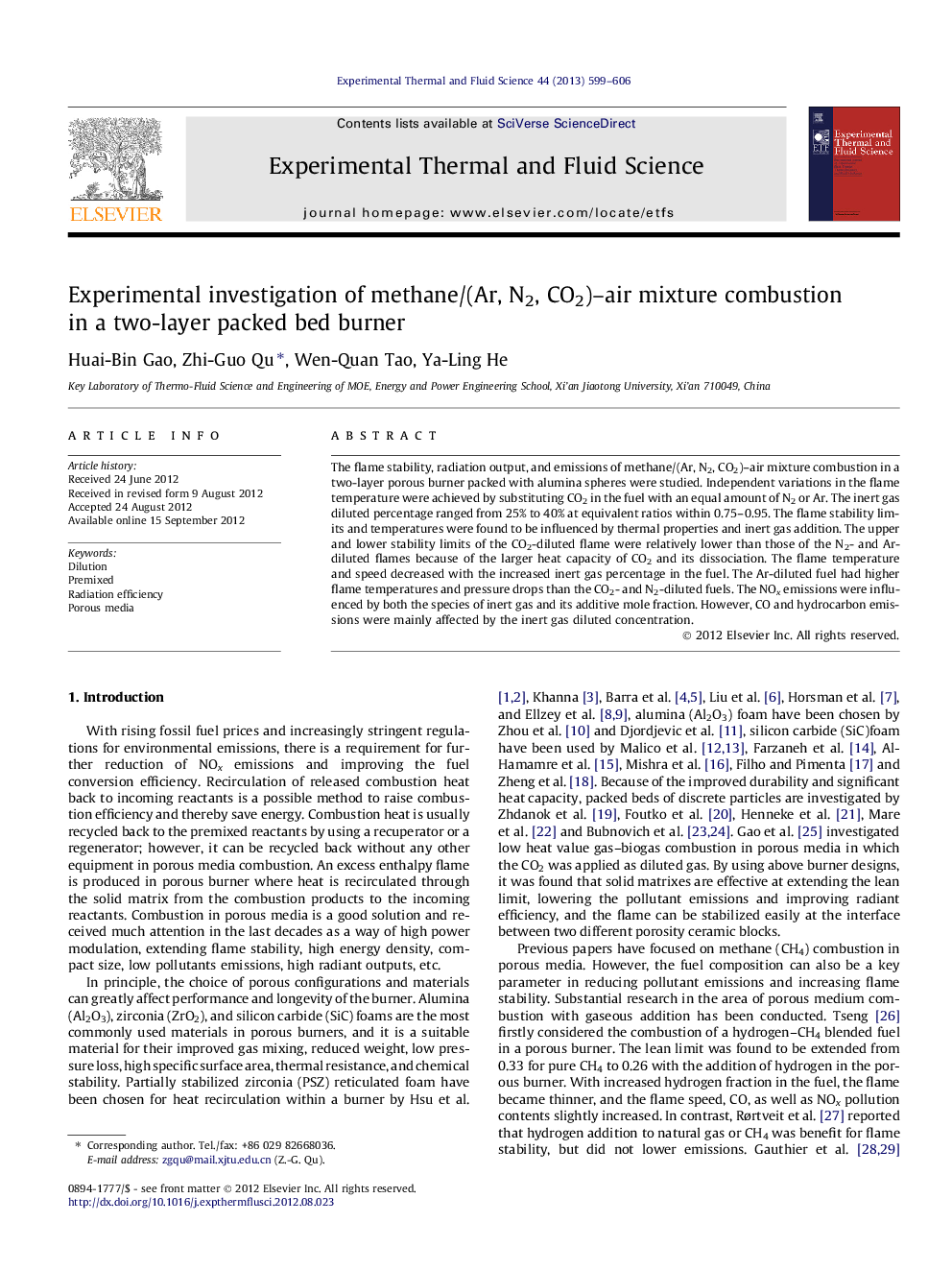| Article ID | Journal | Published Year | Pages | File Type |
|---|---|---|---|---|
| 651548 | Experimental Thermal and Fluid Science | 2013 | 8 Pages |
The flame stability, radiation output, and emissions of methane/(Ar, N2, CO2)–air mixture combustion in a two-layer porous burner packed with alumina spheres were studied. Independent variations in the flame temperature were achieved by substituting CO2 in the fuel with an equal amount of N2 or Ar. The inert gas diluted percentage ranged from 25% to 40% at equivalent ratios within 0.75–0.95. The flame stability limits and temperatures were found to be influenced by thermal properties and inert gas addition. The upper and lower stability limits of the CO2-diluted flame were relatively lower than those of the N2- and Ar-diluted flames because of the larger heat capacity of CO2 and its dissociation. The flame temperature and speed decreased with the increased inert gas percentage in the fuel. The Ar-diluted fuel had higher flame temperatures and pressure drops than the CO2- and N2-diluted fuels. The NOx emissions were influenced by both the species of inert gas and its additive mole fraction. However, CO and hydrocarbon emissions were mainly affected by the inert gas diluted concentration.
► Heat capacity and release affect diluent gases combustion performance evidently. ► CO2 dilution resulted in lower flame stability limits than N2 and Ar dilutions. ► Flame location for CH4 dilutions was more sensitive to flame speed than N2, Ar. ► The pressure drops increased in the order of CH4/CO2, CH4/N2, and CH4/Ar mixtures. ► The CO and HC emissions were insensitive to the inert gas species.
